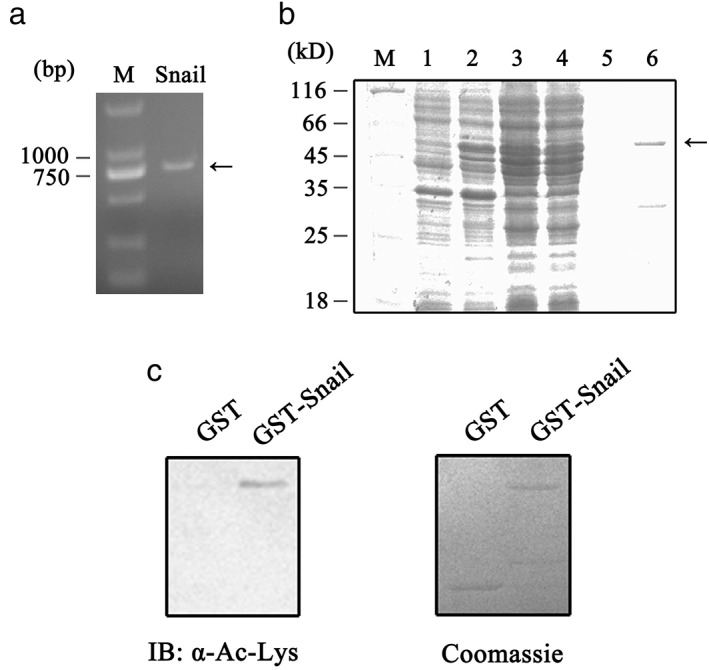Figure 3.

Snail acetylation by p300 in vitro. (a) Amplification of Snail fragment using pCMV‐Tag2B‐Snail as template by PCR. (b) Purification of recombinant glycogen synthase kinase‐Snail protein. The pGEX‐Snail construct was transformed into E . coli BL21 (DE3) and induced with isopropyl β‐D‐1‐thiogalactopyranoside. The destined proteins were purified using Glutathione Sepharose 4B.M: Marker. Lane 1: total proteins from uninduced E . coli BL21 (DE3) transformed with pGEX‐Snail; Lane 2: total proteins from induced E .coli BL21 (DE3) transformed with pGEX‐Snail; Lanes 3 and 4: soluble proteins and pellets from induced E . coli BL21 (DE3); Lane 5: wash buffer treated; Lane 6: purified recombinant glycogen synthase kinase (GST)‐Snail (56 kD). (c) In vitro acetylation of Snail. GST or GST‐Snail were incubated with p300 histone acetyltransferase domain and acetyl coenzyme A at 37°C for one hour. (left panel) The samples were analyzed by Western bolt using anti‐acetylated lysine antibody. (right panel) Proteins used in the assay were detected by Coomassie blue staining.
